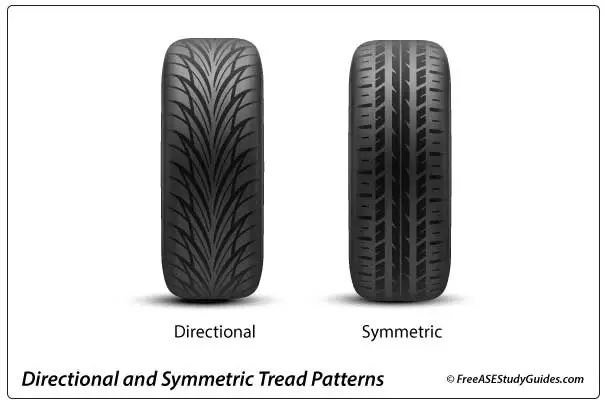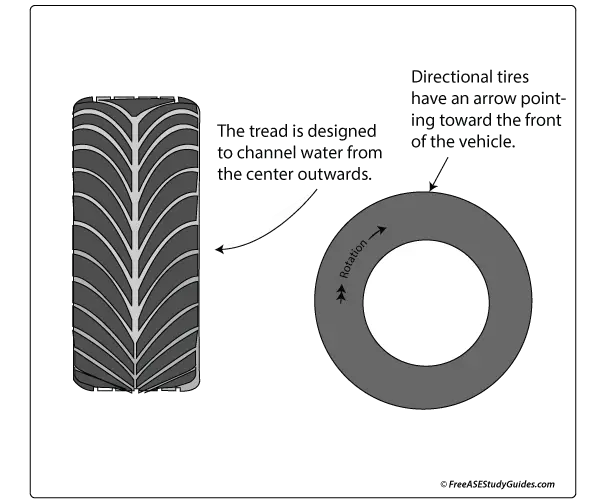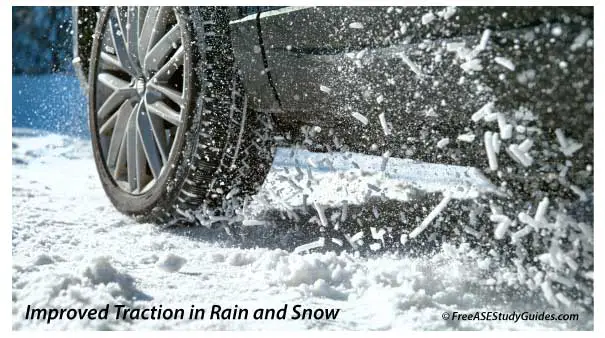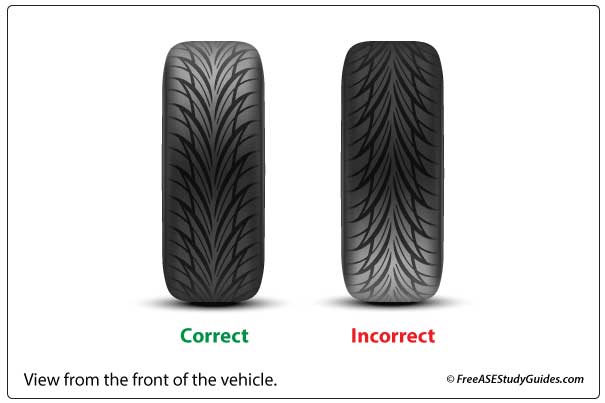Directional Tires

Directional tires have a V-shaped tread pattern designed to channel water away from the center of the tire and outwards. Because of this unique tread design, this tire must rotate in only one direction.

Unless they are dismounted and flipped, they must be kept on the same side of the vehicle and not rotated to the other side. For example, rotate the left front to the left rear

They perform better than symmetrical/asymmetrical tires at high speeds. They are better at water channeling, reducing the chance of hydroplaning on wet surfaces.

When rotating, never crisscross these tires. The tires must be dismounted and flipped before moving to the other side. It's expensive to dismount tires, and most owners and shops routinely rotate them front to rear. Because they are often rotated front to rear and not diagonally, they may wear slightly more than symmetrical and asymmetrical tires.